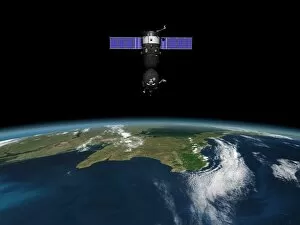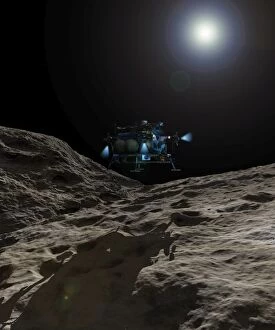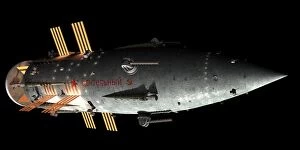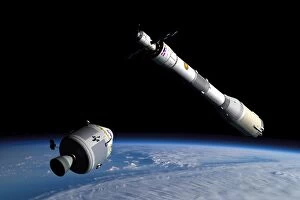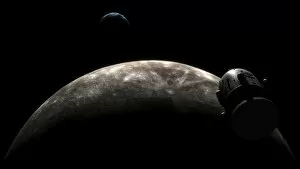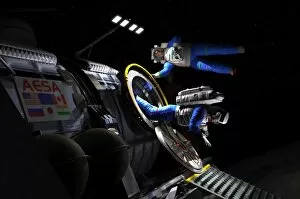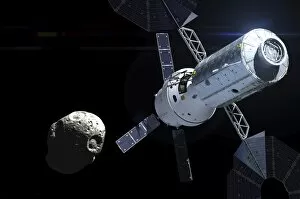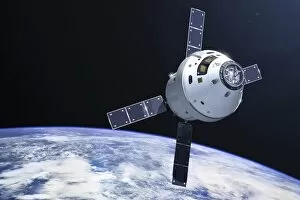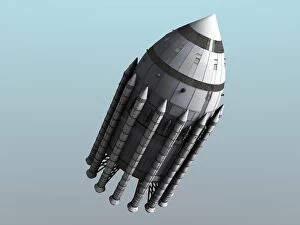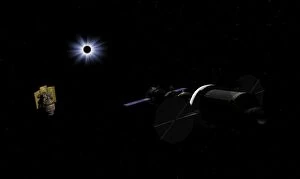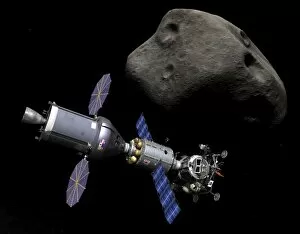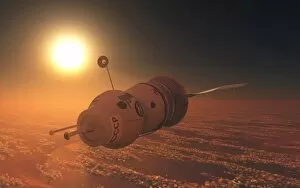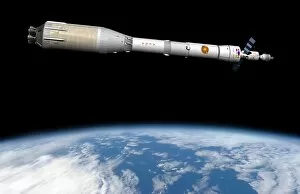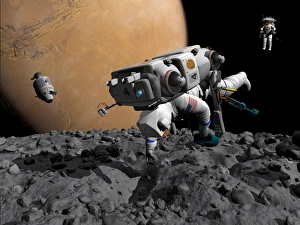Crew Exploration Vehicles Collection
"Crew Exploration Vehicles: Pioneering the Boundless Frontiers of Space" A Soyuz TMA-M spacecraft gracefully floats in low Earth orbit
For sale as Licensed Images
Choose your image, Select your licence and Download the media
"Crew Exploration Vehicles: Pioneering the Boundless Frontiers of Space" A Soyuz TMA-M spacecraft gracefully floats in low Earth orbit, carrying brave astronauts towards their celestial destination. With precision and determination, a manned Asteroid Lander approaches the desolate surface of an asteroid, ready to unveil its secrets. Behold the majestic Deep Space Vehicle and Extended Stay Module as it reveals its starboard bow view in a captivating close-up, showcasing humanity's quest for knowledge beyond our planet. Immerse yourself in an artist's concept of an Orion-drive battleship; reminiscent of Soviet-style innovation that pushes the boundaries of space exploration. Like a cosmic ballet, a command module elegantly approaches an awaiting rocket amidst Earth's orbit, symbolizing mankind's relentless pursuit to conquer new frontiers. Envisioned by artists is a remarkable Deep Space Vehicle with Extended Stay Module and Manned Maneuvering capabilities – a testament to human ingenuity propelling us further into uncharted territories. Witness the harmonious union between man and machine as a manned Soyuz TMA-M spacecraft docks seamlessly with an extended stay module, enabling prolonged missions beyond Earth's atmosphere. Prepare for awe-inspiring moments as a manned Asteroid Lander readies itself to touch down on the rugged surface of an asteroid – unlocking mysteries hidden within these ancient celestial bodies. Gaze at the breathtaking sight of an Orion-drive spacecraft gracefully gliding through lunar orbit, embodying humanity's aspirations to explore and colonize other worlds within our solar system. Step into the shoes of intrepid explorers donning space suits as they emerge from an Asteroid Lander onto unfamiliar terrain – pioneers venturing where no one has set foot before. Marvel at the sheer power unleashed as an Orion-drive spacecraft bids farewell to Earth orbit, embarking on daring interstellar journeys that redefine our understanding of the cosmos.

